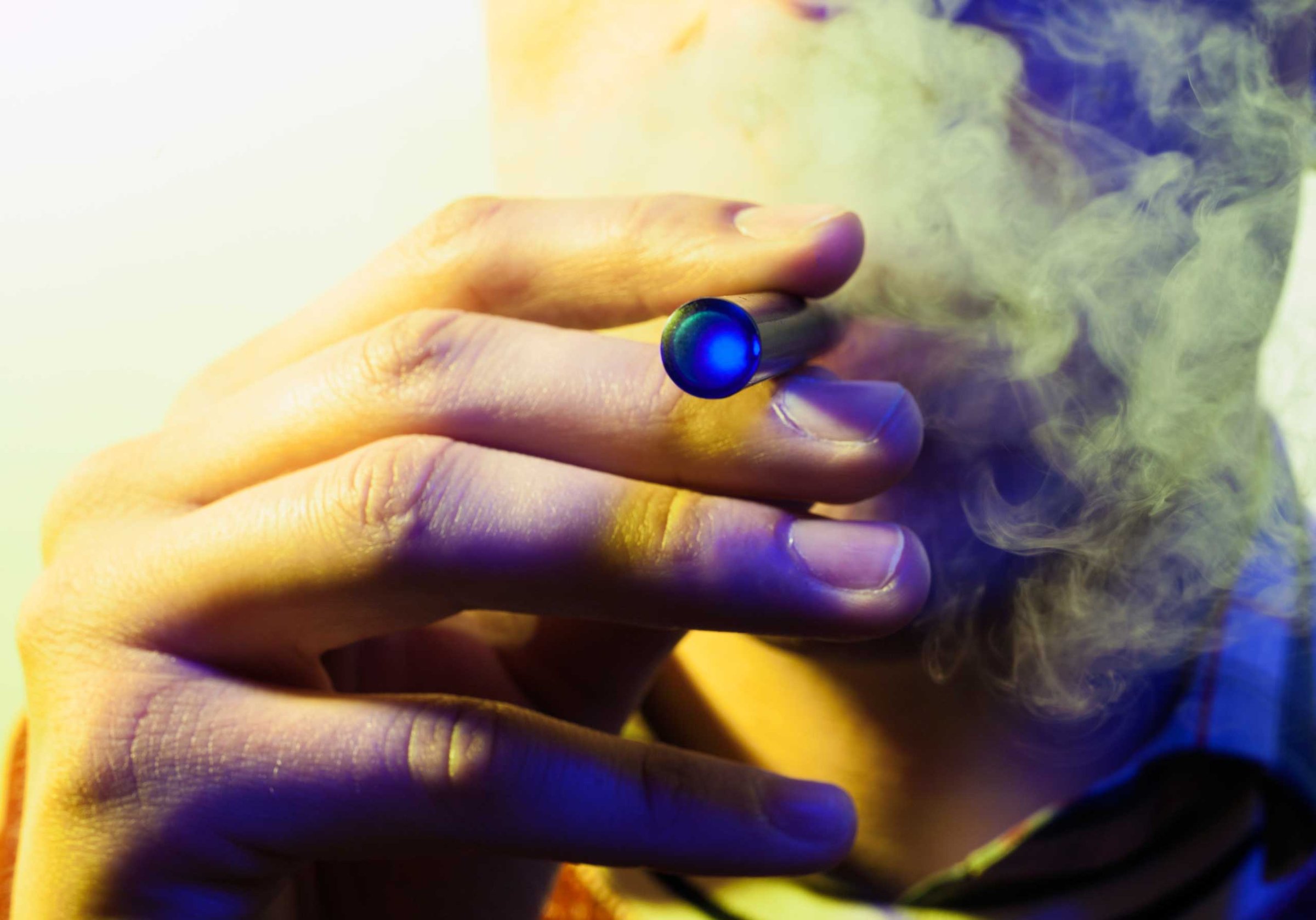
In a new study, chemicals of concern were identified in common e-cigarette flavors—including the buttery compound often found in microwave popcorn.
The research, conducted by scientists at the Harvard T.H. Chan School of Public Health and published in the journal Environmental Health Perspectives, looked at 51 different types of flavored e-cigarettes and liquids from prominent vendors. They tested the e-cigarettes for the presence of three chemicals considered “high priority” when it comes to respiratory risk: diacetyl, acetoin and 2,3-pentanedione.
Diacetyl is of specific concern because prior research has linked inhaling the chemical to developing a severe respiratory disorder called bronchiolitis obliterans. The disorder is nicknamed “popcorn lung” for a case in which several workers developed the health complication from inhaling artificial butter flavor from microwave popcorn in a processing plant in 2000. Both diacetyl and acetoin were found in the air inhaled by the workers. The compound 2,3-pentanedione is used as a substitute for the two chemicals because it’s similar in structure, but it has not been proven safe for inhalation.
To test the products, the researchers put the e-cigs in a chamber that drew air for eight seconds at a time. They then analyzed the vapor. In 47 of the flavors, at least one of the three chemicals was identified. The researchers identified measurements of diacetyl in 39 of the flavors, acetoin in 46 and 2,3-pentanedione in 23 of the flavors.
Lead study author Joseph Allen, an assistant professor of exposure assessment science at Harvard, says the chemicals they tested are considered by federal regulatory bodies to be safe when used as intended; they’re in a regulatory category called “generally recognized as safe” (GRAS). However, Allen points out that their GRAS status “applies to ingestion only, not for inhalation.”
“They are not vetted for safety for inhalation,” says Allen. “We don’t have safe limits for the general public for inhaling these compounds. There have been limits published for workers in terms of acceptable exposure limits, but these limits don’t apply to members of the public.” Another of Allen’s concerns is that many of the e-cigarette flavors in which the chemicals were found to be present are likely to be appealing to children.
Given the immense size of the market—there are about 7,000 different types of flavored e-cigs and liquids—the number of e-cigarettes sampled in the study is small, and the researchers say it’s unknown how generalizable their findings are to the whole market.
Supporters of e-cigarettes argue the products are healthier than conventional cigarettes because they don’t have the carcinogenic smoke that comes from tobacco, and some users say e-cigarettes help them kick their cigarette habit. In the next few months, U.S. Food and Drug Administration (FDA) regulations for e-cigarettes are expected to be released; the agency wants to regulate the products as they do conventional tobacco products.
More Must-Reads from TIME
- Cybersecurity Experts Are Sounding the Alarm on DOGE
- Meet the 2025 Women of the Year
- The Harsh Truth About Disability Inclusion
- Why Do More Young Adults Have Cancer?
- Colman Domingo Leads With Radical Love
- How to Get Better at Doing Things Alone
- Michelle Zauner Stares Down the Darkness
Contact us at letters@time.com